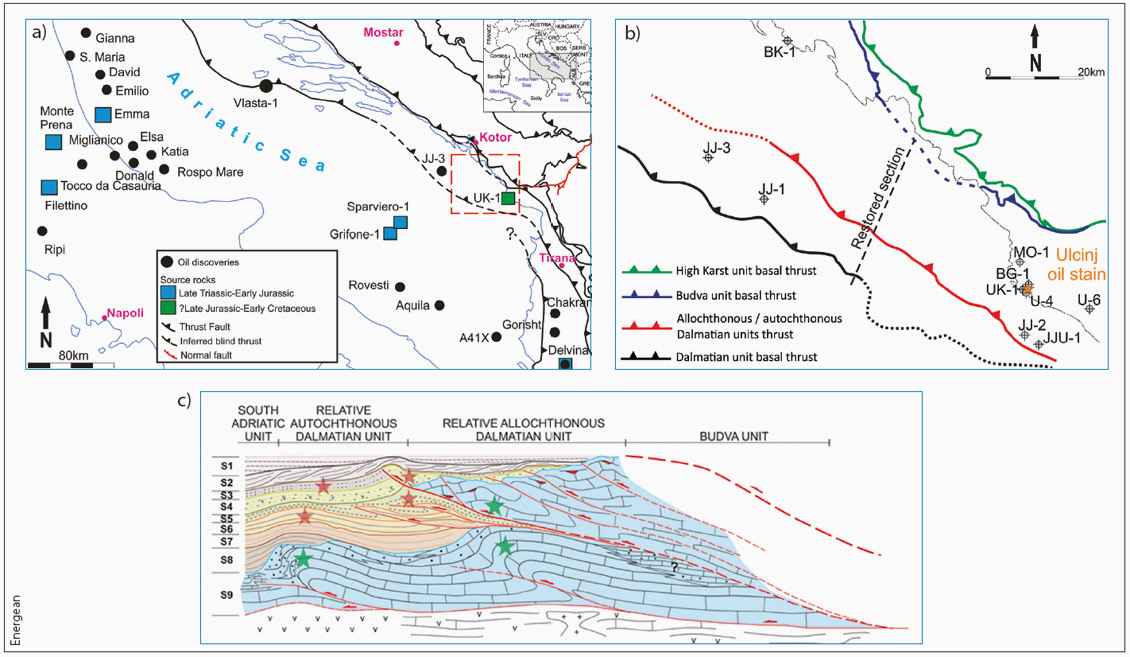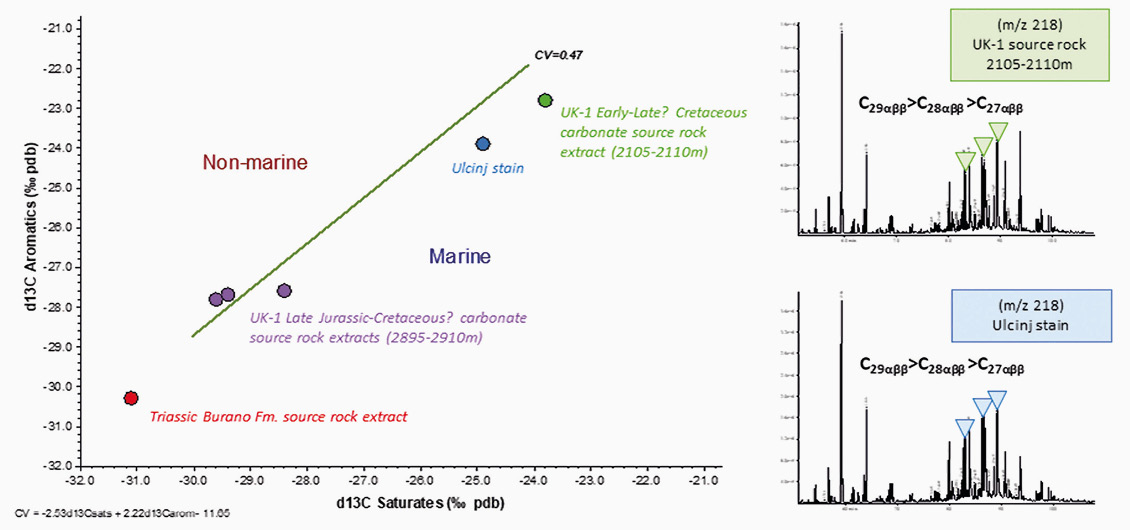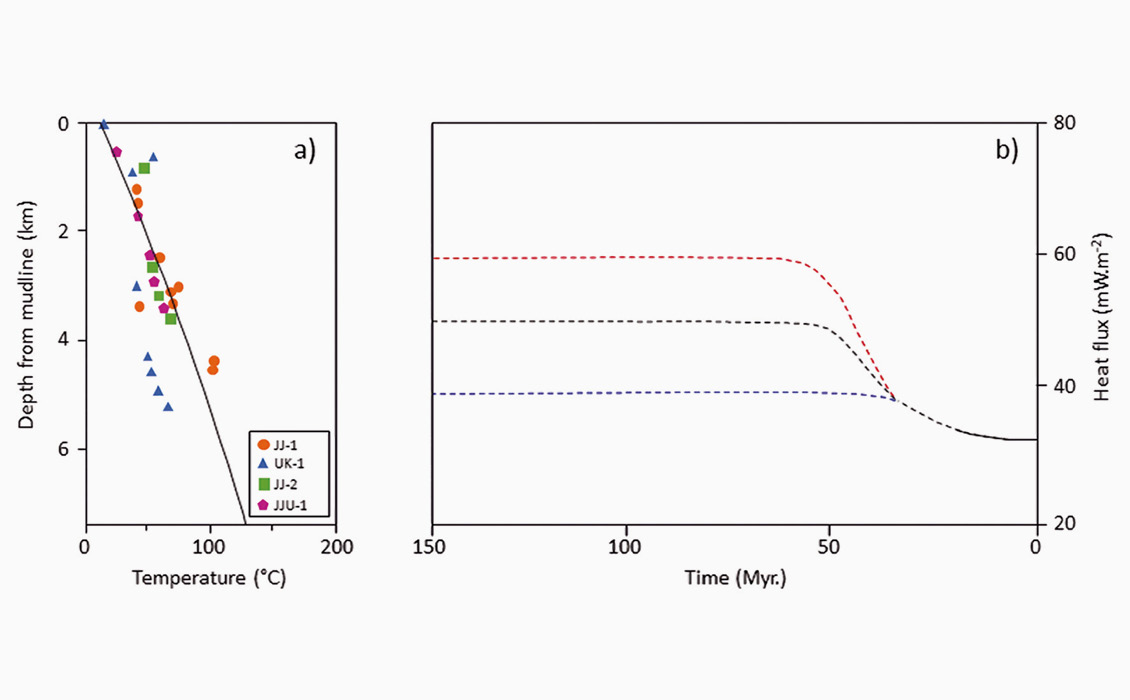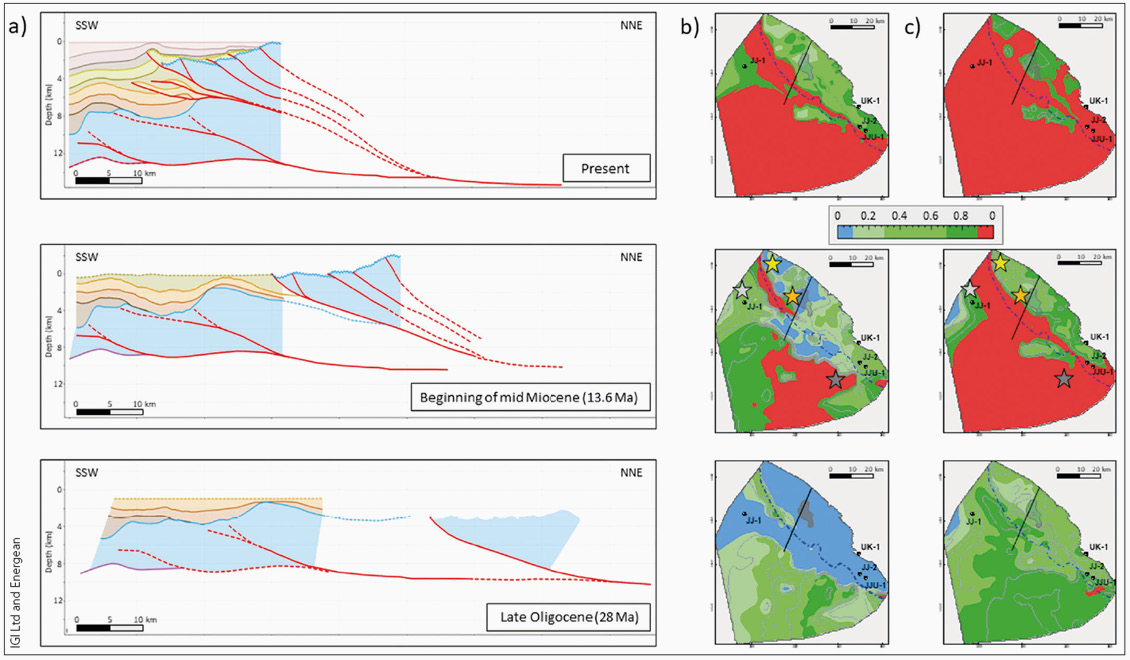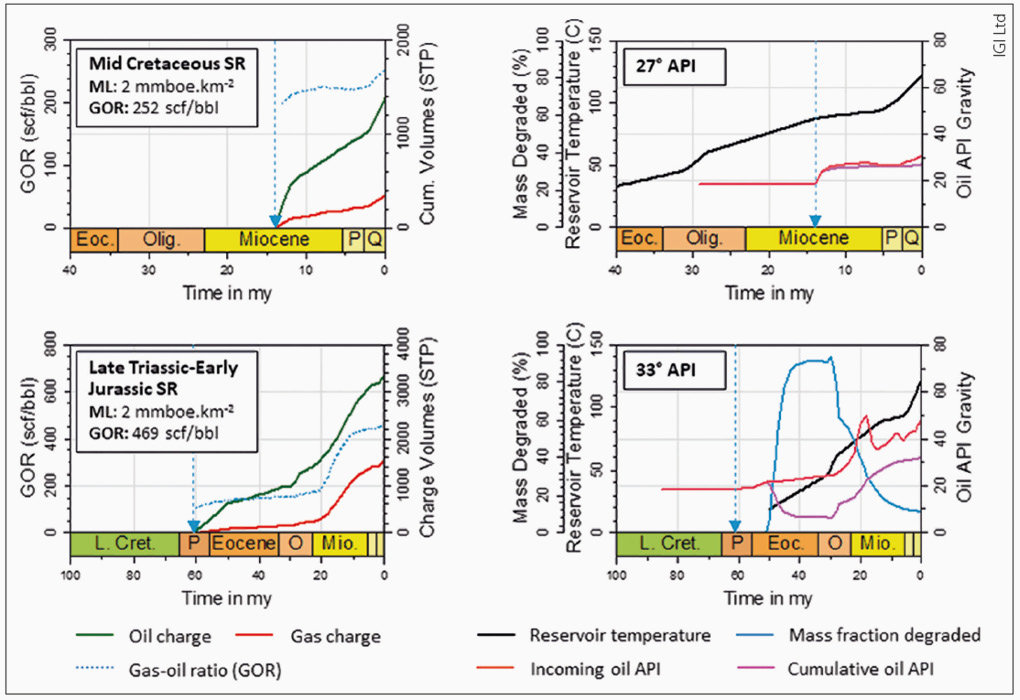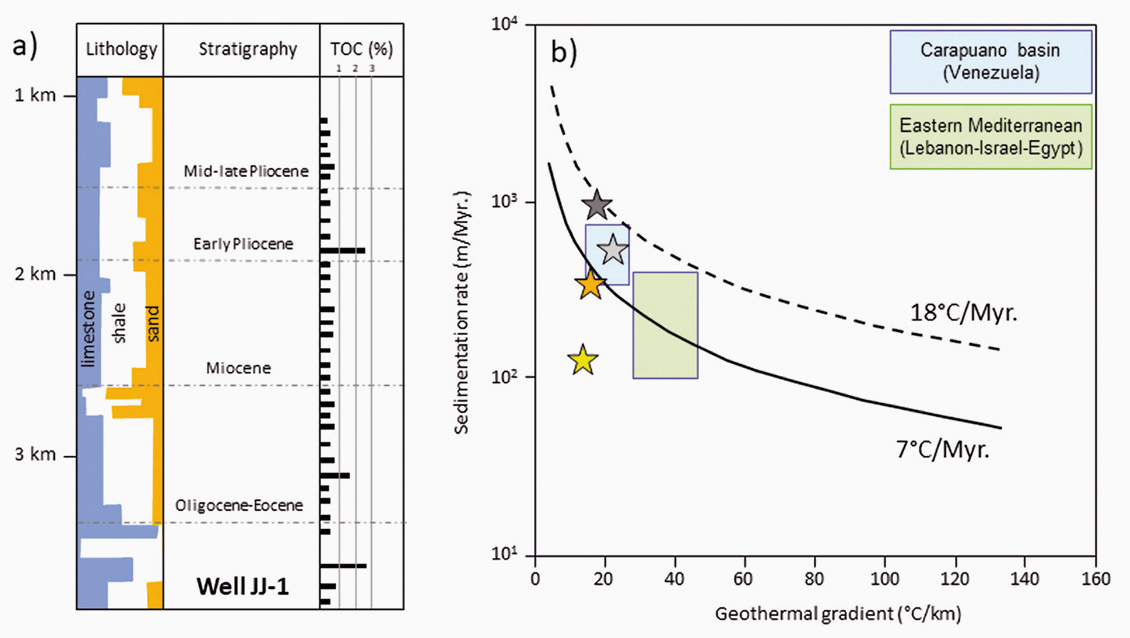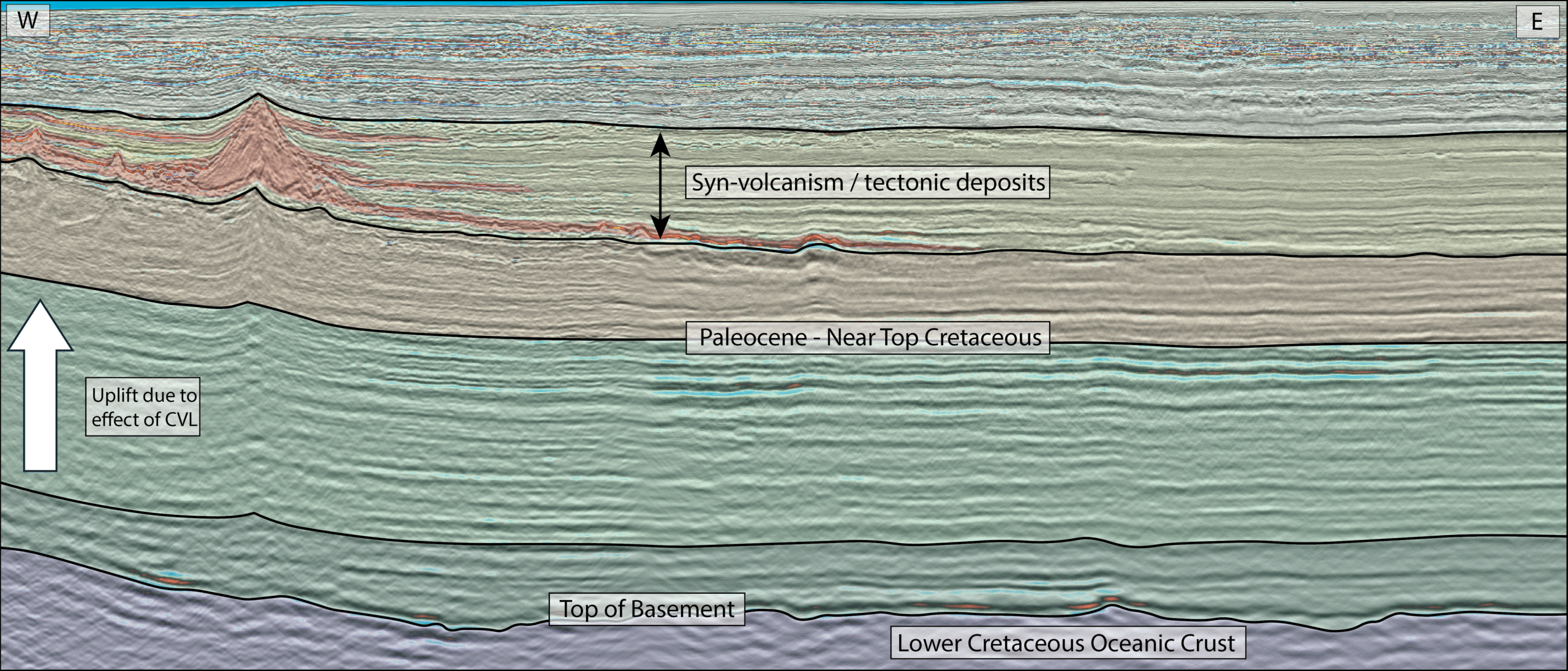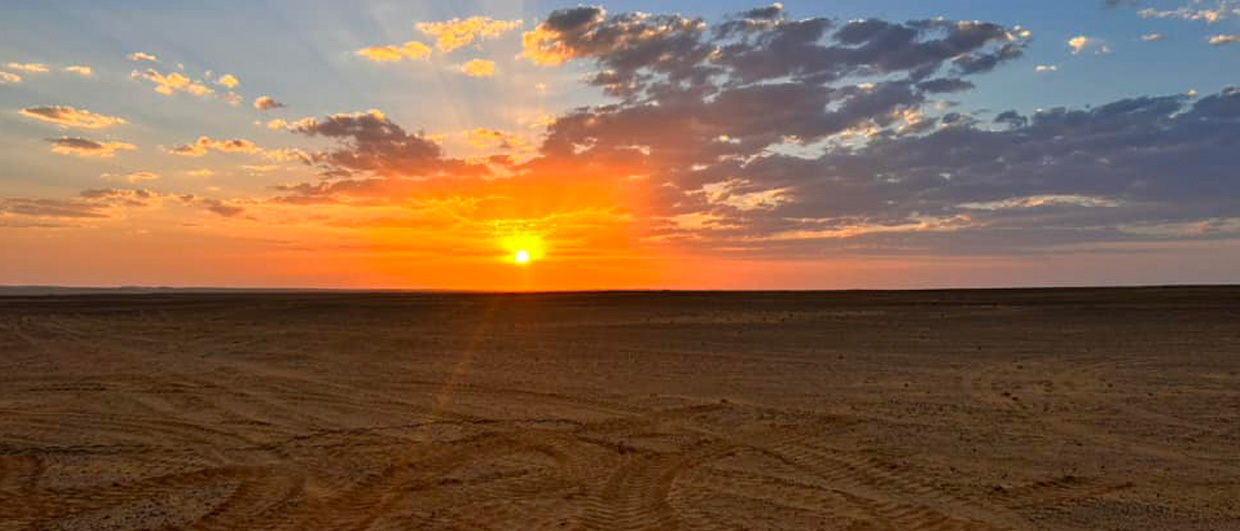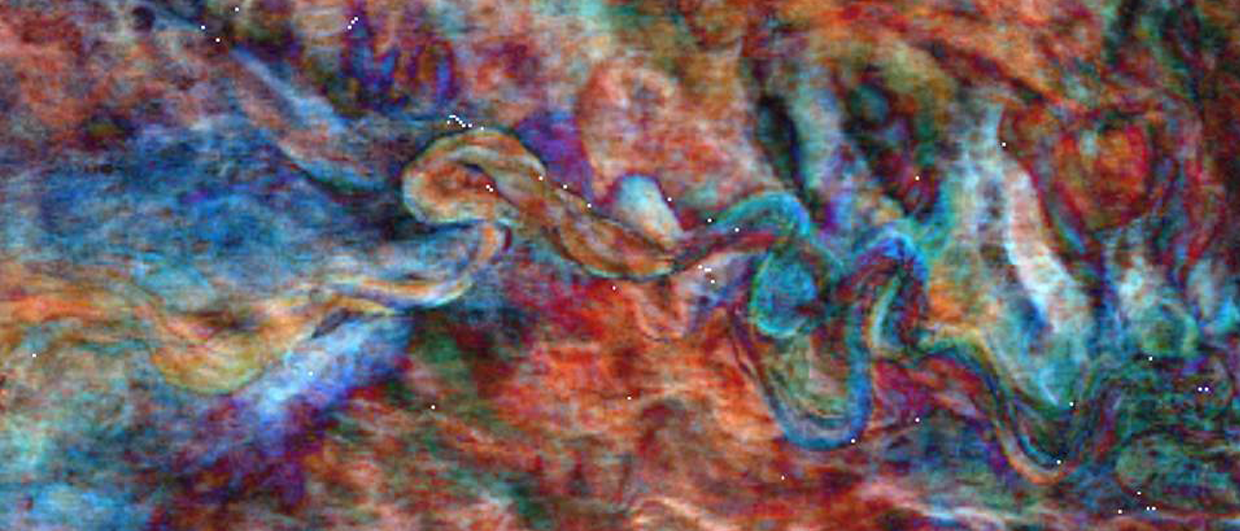The Dalmatian platform offshore Montenegro has the potential to have equivalent carbonate plays conjugate to the Apulian platform. New geochemical information also reveals the presence of an oil-prone Late Jurassic–Early Cretaceous source rock, in addition to the well-established Late Triassic Burano Formation. The Dalmatian foreland basin also indicates optimal conditions for the development of a biogenic gas play, proven by the discoveries in the North Adriatic. Energean operates in two blocks, offshore Montenegro, recognizing the potential that is reinvigorating interest in the region.
From Rift to Foreland
The offshore Montenegro is located in the Adriatic foreland, that contains Triassic to Quaternary sedimentary rocks bordered by the SW-vergent Dinaride orogenic system to the east (Schmid et al., 2020; Figure 1a). The Dinarides are characterized by eastward subduction that began in the Mesozoic and largely ended in the Early Miocene in the northern and central segment, while within the southern portion (close to the Albanides and the Hellenides) subduction continues to the present (Moretti and Royden, 1998).
Regional structural and stratigraphic correlations from the eastern Adriatic suggest that during the Late Triassic, the paleogeographic domains of off shore Montenegro were part of a wider platform known as the Southern Tethyan Megaplatform (STM; Vlahović et al., 2005). During the middle Early Jurassic the break-up of the STM was accompanied by extension of the entire area, resulting in the formation of several intra-platform basins. In the Dalmatian part of the Adriatic carbonate platform, shallow water sedimentation lasted throughout the Jurassic and Cretaceous with extended periods of shallow-marine deposition interrupted by emergences of variable duration. The long-lasting carbonate sedimentation was interrupted abruptly during the Middle Eocene and the platform was covered by the clastic sediments of the foreland.
During the (?Late Oligocene–) Early Miocene, convergent deformation affected the Dalmatian unit. Thrusting propagated at considerable distance through the foreland and a series of growth anticlines were formed above blind thrust faults (Figure 1c). It is suggested that the tectonic structures offshore Montenegro (Figure 1b–c) exhibit several changes in their development that are gradual but can be tentatively grouped into two stages of convergent deformation. The first stage is associated with in-sequence (foreland-progressing) thrusting during the Early Miocene, followed by out-of-sequence (hinterland-propagating) thrusting from mid-Miocene to present (Figure 4a).
Exploration in the Central-Southern Adriatic
Relevant discoveries in the central-southern Adriatic and surrounding Italian-Dinaric-Albanian margins include the oils sourced by Mesozoic carbonate source rocks and trapped in carbonate reservoirs, and the biogenic gas in thick Pliocene to Pleistocene sequences. The carbonate source rocks are Triassic to Late Cretaceous, deposited in dysoxic to anoxic environments, which typically generate high sulfur, low API oils (5° to 22° API). The exceptions are the Aquila (37° API) and Rovesti (25–30° API) fields in the southern Adriatic Apulian platform, conjugate to the southern Montenegro–Albania margin (Figure 1a; see Cazzini et al., 2015 for a detailed description of the oils). The biogenic gas accumulations are expected to occur in both stratigraphic and structural traps, similar to that found off shore Italy and Croatia, and the Durres Basin of Albania (Bega, 2015; and references therein). The SE Adriatic Montenegro carbonate platform and adjacent foreland basin are thus promising exploration environments being targeted by Energean.
Carbonate targets have been drilled in the past in various locations along the SE Adriatic platform with the discoveries in Vlasta-1 and JJ-3 (Figure 1). The closest discovery to the targeted area is JJ-3, which found a 20m live oil column within the Cretaceous carbonates. The majority of the wells in Montenegro have drilled the shallow hanging wall carbonate unit and were either dry or had oil shows.
A New Insight into Source-Fluid Correlations
The most prolific source rocks in the region are usually interpreted as Late Triassic to Early Jurassic sulfur-rich carbonates within thick carbonate-evaporitic sequences (e.g. Mattavelli and Novelli, 1990). Of particular relevance for the area are the thick Early Jurassic source intervals drilled in the Apulian carbonate platform, conjugate to the southern Montenegro–Albania margin. At well Sparviero-1, shown on Figure 1a, for example, quantitative source rock data presented in Cazzini et al. (2015) show a 90m-thick, dolomitized micritic limestone with an average TOC of 1.7% and HI values of up to 700–800 mg/gTOC, overlain by an around 35m layer of leaner (1% TOC), slightly less oil-prone (HI up to 600–700 mg/gTOC) Toarcian source rock. The oils from the Aquila and Rovesti fields have been correlated to the Late Triassic Burano Formation, based on biomarker and isotopic data and a source rock sample from a well (Trevi-1) in the central Apennines (Cazzini et al., 2015 and references therein), but may arguably be sourced from Early Jurassic horizons.
Highly oil-prone source rock horizons have also been identified in southern Montenegro, for example in the Ulcinj Kopno-1 (UK-1) coastal well, previously interpreted as Late Cretaceous. These samples have been re-analyzed and show variations in their molecular and isotopic compositions. As depicted in Figure 2, the shallower samples (2105–2110m) have saturate and aromatic stable carbon isotope signatures up to 5% heavier than the deeper source extracts (2895–2900m), and correlate well with the Ulcinj oil stain (see Figure 1b for location). A strong correlation is also apparent in the molecular composition of the shallower source extract and the oil stain, with sterane carbon number distributions of C29αββ>C28αββ>C27αββ, and C29αβ hopanes > C30αβ hopanes. On the other hand, the lighter isotopic composition of the deeper extracts resembles that of the Triassic Burano Formation. The samples’ stratigraphy has also been revised, suggesting a Late Jurassic to earliest Cretaceous age for the deeper samples, which could explain the observed variations in the isotopic and molecular compositions, associated with variations in the depositional environments.
Is the SE Adriatic Hot/Deep Enough?
The SE Adriatic foreland basin and adjacent fold and thrust belt are traditionally regarded as a ‘cold’ place, overlying the Dinaric subduction. The emplacement of the thrust nappes from the Eocene-onwards has thickened the overburden along the Montenegro shelf by up to 7.5 km, and the Dalmatian foreland basin is up to 14 km thick (up to 5.5 km in the Plio-Pleistocene). For this study, we built a 3D (map-based) thermal-burial model for the offshore Montenegro area based on recently processed and interpreted 2D and 3D seismic data and analogies with the Apulian conjugate margin, and calibrated it at borehole locations in the foreland basin and the fold and thrust belt (Figure 3a). The models suggest a decrease in the basement heat flux from 30–35 mW.m–2 in the foreland basin to 20–25 mW.m –2 in the platform, likely controlled by the geometry of the subduction zone, and account for a greater average heat flux pre-Eocene, in a post-rift margin setting (Figure 3b). For the emplacement of the thrust nappes and the progressive thickening of the sub-thrust platform, we used the detailed structural reconstructions provided by Energean (Figure 4a). The reconstructions suggest that ~50% of the vertical load due to thrusting was emplaced between the mid-Oligocene and mid-Miocene, ~15% between the mid-Miocene and the early Pliocene, and ~35% from the early Pliocene onwards. The carbonate source rock horizons parameterized in the sub-thrust carbonate platform include the Early–Late Cretaceous identified in well UK-1, and the prolific Late Triassic–Early Jurassic documented in the conjugate Apulian platform. The modelling results indicate that: (1) an Early–Late Cretaceous horizon reaches oil and gas maturity over large parts of the foreland basin during Miocene-to-Recent burial, and mid- to late-oil maturity along the continental shelf-slope from the mid-Miocene onwards (Figure 4b); (2) a Late Triassic–Early Jurassic horizon reaches mid- to late-oil maturity over most of the area in pre-orogenic times, becoming gas mature in the foreland basin during the Miocene, and along the shelf from the mid-Miocene onwards (Figure 4c). The predicted maturity-generation timing in the sub-thrust carbonate platform is thus contemporaneous, or subsequent to the development of compressional structures along the continental shelf and slope.
Figure 5 shows the predicted charge history in a sub-thrust prospect (gray polygon in Figure 4b–c), for both the Cretaceous and Triassic–Jurassic source horizons. The models assume a 100m-thick source horizon, with a total organic carbon (TOC) content of 2% (wt%), HI of 600 mg/gTOC, and 2 mmboe.km –2 migration losses, but the volumes shown here are merely illustrative. For both source horizons, the models predict a low gas–oil ratio (GOR) charge and black-oil API values trapped in-place, with significant biodegradation limited to the pre-Miocene charge, in the case of a Triassic–Jurassic source. Sensitivity tests varying the geothermal gradients or the source depths within reasonable uncertainty show similar maturity-generation-expulsion histories.
Another potential play in the area is the biogenic gas generated in organic-rich layers and accumulated in sand lenses within the Plio-Pleistocene (or older) turbiditic sequences. The geochemical logs in well JJ-1 (see Figure 1b for location) show intervals of significant organic richness within the Pliocene and Eocene–Oligocene detritical sequences, up to 2.8 %wt TOC (Figure 6a). Although the hydrolyzable (labile) fraction of the kerogen, that can be involved in the biochemical reaction, is probably limited to 30–40% of the TOC (Schneider et al., 2016 and references therein), a TOC of 0.7–1.1 %wt is sufficient to charge large structures, depending on the continuity of the organic-rich levels and the connectivity of the sand lenses. The heating rates (sedimentation rates x thermal gradients) in the area can be regarded as intermediate (platform-slope) to optimal (foreland basin) for the development of biogenic gas systems, and within the range of well-known fields (Figure 6b).
References
- Bega, W., (2015) Hydrocarbon exploration potential of Montenegro – a brief review. Journal of Petroleum Geology, 38, pp 317-330.
- Cazzini, F., Zotto, O.D., Fantoni, R., Ghielmi, M, Ronchi, P. & Scotti, P. (2015). Oil and gas in the Adriatic foreland, Italy. Journal of Petroleum Geology, 38(3), pp 255-279.
- Clayton, C. (1992). Source volumetrics of biogenic gas generation. In: Vially, R. (ed.). Bacterial Gas. Paris, Editions Technip, pp 191-204.
- Matavelli L & Novelli L (1990). Geochemistry and habitat of the oils in Italy, AAPG Bulletin, 74.
- Moretti, I., & Royden, L., (1988). Deflection, gravity anomalies and tectonics of doubly subducted continental lithosphere: Adriatic and Ionian Seas. Tectonics, 7 (4), pp 875-893.
- Schmid, S.M., Fügenschuh, B., Kounov, A., Matenco, L., Nievergelt, P., Oberhänsli, R., Pleuger, J., Schefer, S., Schuster, R., Tomljenović, B., Ustaszewski, K. & van Hinsbergen, D.J.J. (2020). Tectonic units of the Alpine collision zone between Eastern Alps and western Turkey. Gondwana Research. 78, pp 308–374.
- Schneider, F., Noya, J.A. & Magnier, C. (2012). Model of low maturity generation of hydrocarbons applied to the Carupano Basin, Offshore Venezuela. In: Peters, K.E., Curry, D.J., Kacewicz, M. (eds.). Basin Modeling: New Horizons in Research and Applications. American Association of Petroleum Geologists (AAPG). Hedberg Series, 4, pp 51-69.
- Schneider, F., Dubille, M., Montadert, L. (2016). Modeling of microbial gas generation: application to the eastern Mediterranean “Biogenic Play”. Geologica Acta, 14(4), pp 403-417.
- Vlahović, I., Tišljar, J., Velić, I. & Matičec D. (2005). Evolution of the Adriatic Carbonate Platform: Palaeogeography, main events and depositional dynamics. Palaeogeography Palaeoclimatology Palaeoecology, 220(3), pp 333-360.


